Metal cutting machines play a crucial role in the machining industry, as they are responsible for shaping metals with precision and efficiency. With the help of advanced technology, traditional machine tools have evolved into computerised numerical control (CNC) machines that can handle complex shapes and sizes.
Understanding the different types of metal cutting tools is essential for achieving better productivity, reducing workload, and producing high-quality products within a specified timeframe. Let’s delve into the various metal cutting machines to help you make an informed decision about which one to use for your specific needs.
Types of Metal Cutting Machine
There are several types of metal cutting machines, each with its own unique set of characteristics, applications, advantages, and disadvantages. Understanding the different types of metal cutting machines is crucial for improving productivity, efficiency, and product quality in the machining industry.
1. Lathe Machines
Lathe machines are the oldest and most widely used type of metal cutting machines. They operate by rotating a workpiece while a cutting tool removes material from it. Lathe machines are versatile and can be used to cut metals of different shapes and sizes.
- Working Principle: Lathe machines consist of a spindle, chuck, and tailstock. The workpiece is mounted between the spindle and tailstock, and the spindle rotates it while the cutting tool removes material from it. The cutting tool can be moved along the workpiece's length, allowing for precise cuts to be made.
- Applications: Lathe machines are used to produce cylindrical and conical shapes, such as gears, pulleys, and crankshafts.
- Advantages and Disadvantages: The advantages of lathe machines include their versatility, precision, and ability to produce a range of shapes and sizes. However, lathe machines can be time-consuming and require skilled operators.
2. Milling machines
Milling machines are used to remove material from a workpiece by rotating a cutting tool. They are capable of producing complex shapes and contours.
- Working Principle: Milling machines consist of a worktable, spindle, and cutting tool. The workpiece is mounted on the worktable, and the cutting tool rotates around the spindle, removing material from the workpiece.
- Applications: Milling machines are used to produce flat and contoured surfaces, slots, and holes.
- Advantages and Disadvantages: The advantages of milling machines include their ability to produce complex shapes and contours, high productivity, and versatility. However, they can be expensive and require skilled operators.
3. Grinding Machines
Grinding machines are used to remove material from a workpiece by grinding it with a rotating abrasive wheel.
- Working Principle: Grinding machines are designed to remove material from a workpiece by abrasion, usually with a rotating grinding wheel. The grinding process removes tiny chips of material from the workpiece's surface, producing a smooth and refined finish.
- Applications: Grinding machines are used in a variety of industries, including aerospace, automotive, construction, medical, and more. They are used to produce precision components, parts with tight tolerances, and parts with a high surface finish. Grinding machines can also be used to sharpen tools, recondition worn parts, and remove coatings or corrosion from surfaces.
- Advantages and Disadvantages: Advantages of grinding machines include high precision, ability to achieve a smooth finish, and ability to remove material from hard-to-reach areas. However, they can be time-consuming, generate a lot of heat, and can produce a lot of dust and debris.
4. CNC Machines
CNC (computer numerical control) machines are computer-controlled metal cutting machines that are capable of producing complex shapes and contours.
- Working Principle: CNC machines are automated machine tools that are programmed and controlled by a computer. They use CAD (Computer-Aided Design) and CAM (Computer-Aided Manufacturing) software to produce precise and complex parts. The machine's movements are controlled by servo motors, and they can perform multiple operations, such as drilling, milling, and turning, all on the same machine.
- Applications: CNC machines are used in a variety of industries, including aerospace, automotive, medical, and more. They are used to produce complex and precise parts, and they can be programmed to produce large quantities of parts with a high degree of accuracy.
- Advantages and Disadvantages: Advantages of CNC machines include high precision, versatility, and ability to produce complex parts. However, they can be expensive, require specialised training, and can be time-consuming to set up and program.
5. Plasma Cutting Machines
A plasma cutting machine is a type of metal cutting machine that uses ionised gas to cut through various types of conductive materials.
- Working Principle: Plasma cutting machines use a plasma torch to cut through metals, such as steel, aluminium, and copper. The plasma torch generates a high-temperature plasma arc that melts the metal and blows it away, leaving a clean cut.
- Applications: Plasma cutting machines are used in a variety of industries, including automotive, construction, and manufacturing. They are used to cut complex shapes, intricate designs, and thick materials.
- Advantages and Disadvantages: Advantages of plasma cutting machines include high cutting speed, ability to cut thick materials, and ability to cut a variety of metals. However, they can produce a lot of noise, require a high power supply, and can generate hazardous fumes and gases.
Factors to Consider for Choosing a CNC Metal Cutting Machine
Following are some of the factors that we must consider when choosing a CNC metal cutting machine:
- Material to be Cut: Consider the standardised tooling method based on the level of risk, inventory, and cost. For instance, aluminium has higher machinability, hence faster tooling process.
- Material Thickness: The CNC metal cutting machine should have walls with a minimum thickness of 1/32".
- Cutting Accuracy Required: Examine if the machine can match the measurement specified in the design. If the machine cuts at the exact location or hits the right spot on average, it still has high accuracy.
- Production Volume: High-end cutting tools are required to produce bulk volumes of products, while the usage of economy-level tooling is acceptable for low-volume jobs.
- Available Budget: The budget allotted depends on the level of production. A high volume of products requires a higher budget, and vice versa.
- Maintenance and Operational Costs: CNC metal cutting machines are highly robust, thus requiring minimal maintenance. Operational costs vary from 6196.13 INR to 9913.80 INR per hour.
In conclusion, metal cutting machines are an essential part of the manufacturing industry. Each type of metal cutting machine has its unique applications, advantages, and disadvantages. Understanding the different types of metal cutting machines and their capabilities is important in selecting the right machine for a particular job. By considering the mentioned factors, you can make informed decisions and optimise production processes. The proper use of metal cutting machines can enhance productivity, reduce costs, and produce high-quality products.


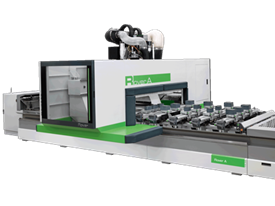
.png)
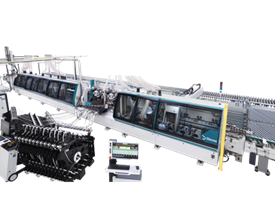
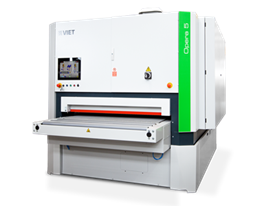
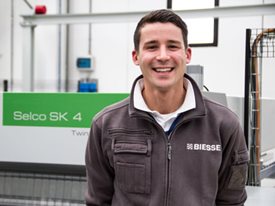
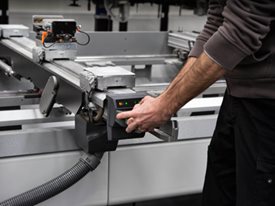

 Worldwide
Worldwide
 Italia
Italia
 United Kingdom
United Kingdom
 Россия
Россия
 France
France
 中国
中国
 Asia
Asia
 Deutschland
Deutschland
 España
España
 Schweiz
Schweiz
 North America
North America
 India
India
 Australia & New Zealand
Australia & New Zealand
 Türkiye Cumhuriyeti
Türkiye Cumhuriyeti
 Middle East
Middle East
 Brasil
Brasil